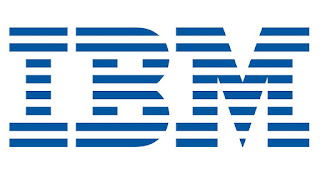On its 25th anniversary, Risk.net Asia recognized IBM Safer Payments as “Fraud detection and prevention product of the year.” This recognition is a testament to the IBM RegTech team’s commitment to bringing next generation risk and compliance solutions to serve clients across the globe and also to meeting geo-specific industry and business needs. IBM Safer Payments won this award specifically for bringing agility to fraud fighting and for its differentiated capabilities. The solution is also well positioned to serve clients in Asia as the region gears up for disruptions from the proliferation of faster payments and the emergence of challenger banks.
Bringing agility to fraud fighting
Fighting financial crimes and fraud has never been easy. The acceleration of digital transformation and economic uncertainty resulting from the pandemic have added more pressure on fraud management. This calls for more agile fraud management approaches.
◉ IBM Safer Payments enables fraud management teams to use any data science, any machine learning, and artificial intelligence technique – proprietary or open source – to outsmart fraudsters.
◉ The platform supports bring-your-own-model options where users can build externally and then import neural networks, random forests, decision trees, and regressions, using their preferred tools.
◉ Models of different types can be combined into ensembles, to leverage the best of each modeling capability
◉ In addition, Safer Payments includes embedded training facilities for popular machine learning algorithms.
◉ Everything in Safer Payments is user-configurable and allows for adaptation to customer data model and ultra-fast configuration of new data feeds.
This unparalleled flexibility offered by IBM Safer Payments enables fraud management teams to keep pace with new fraud schemes and mount defenses well in advance.
A truly differentiated fraud platform
Furthermore, IBM Safer Payments does not a necessitate ‘rip and replace’ approach. The solution can integrate with and augment existing fraud detection solutions without impacting operational efficiency. The solution also:
◉ Enables fraud analysts to update models on the fly with little or no vendor dependencies,
◉ Applies machine learning to not just train models, but also to discover new rules that fraud analysts can quickly test and integrate into the current fraud detection engine,
◉ Is proven to reduce false positive ratio down to the range 1:1 to 1:3.
Upholding customer experience in Asia Pacific and across the globe
More than ever, customers demand superior seamless and frictionless experience in their digital interactions. User-centered design in customer experience can be competitive advantage. Successful organizations leverage technology to deliver the highest levels of customer experience and service. For instance, IBM recently announced that digital bank Volt Bank has integrated IBM Safer Payments solution into its online banking platform. This helps Volt give their clients a more seamless and secure banking experience across the company’s entire platform.
Financial services technology leader FIS, looking for real-time decisioning and increased flexibility, chose IBM Safer Payments to help clients counter person-to-person payments fraud in the U.S.
And Bank of New Zealand announced previously that they selected IBM Safer Payments to deliver cross-channel fraud protection to its customers. The deal supports BNZ’s efforts to provide frictionless and safer payments experience to their customers.
Join the data science revolution
IBM Safer Payments enables your fraud prevention teams to adapt their controls faster to emerging threats and detect fraud with greater speed and accuracy — and without vendor or data scientist dependencies. As part of the IBM RegTech risk and compliance solutions, Safer Payments has the analytics and simulation tools needed to continuously monitor business performance and adapt the decision model to emerging and modified fraud patterns.
Because it has an open platform, customers can leverage their existing detection models and IP all at a low total cost of operation (TCO), as all required components are self-contained and run on commodity hardware.
Source: ibm.com




























